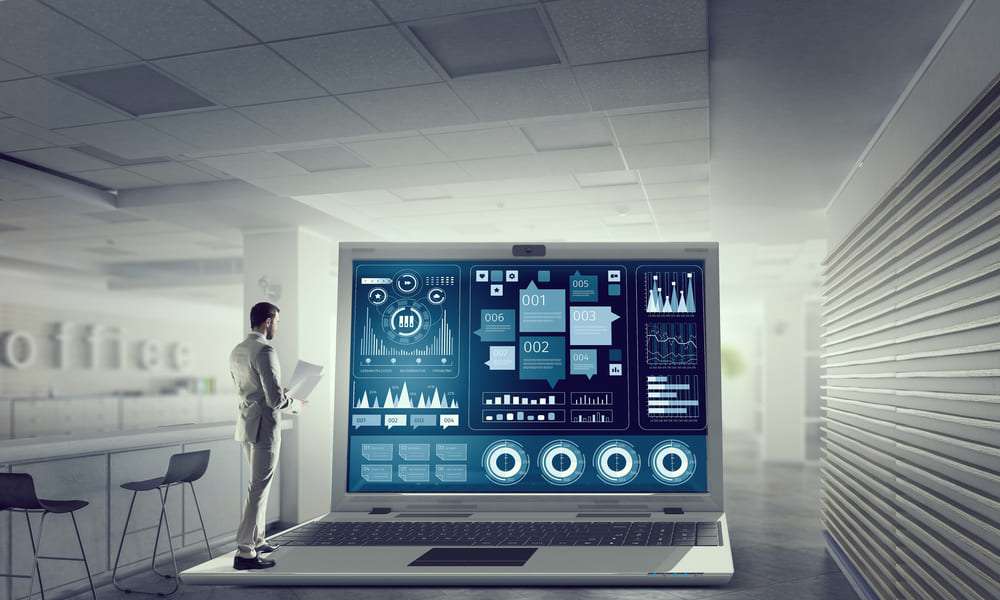The Role of Data
Visualization in Modern Business
As the world becomes increasingly data-driven, businesses are turning to data visualization as a way to make sense of their data and gain insights that can inform decision-making. In fact, research has shown that businesses that use data visualization tools are more likely to make data-driven decisions, leading to increased profitability and productivity.
So, what is data visualization, and how can it help businesses make better decisions? Let's take a closer look.
What is Data Visualization?
Data visualization is the process of representing data in a visual format, such as a chart, graph, or infographic. By visualizing data, businesses can identify patterns and trends that might not be apparent when looking at raw data in a spreadsheet or database.
Data visualization is not a new concept - in fact, humans have been using visual aids to represent data for centuries. However, with the advent of big data and advanced analytics tools, data visualization has become an increasingly important part of modern business decision-making.
The Benefits of Data Visualization
So, why should businesses care about data visualization? Here are just a few of the benefits:
1. Improved Understanding : By visualizing data, businesses can gain a better understanding of complex information and identify patterns and trends that might not be apparent when looking at raw data.
2. Better Decision-Making : Data visualization can help businesses make more informed decisions based on data-driven insights.
3. Increased Efficiency : Data visualization tools can help businesses analyze data more quickly and efficiently, allowing them to identify trends and make decisions faster.
4. Improved Communication : By presenting data in a visual format, businesses can communicate complex information to stakeholders more effectively.
5. Competitive Advantage : By using data visualization to gain insights and make informed decisions, businesses can gain a competitive advantage over their competitors.
Examples of Data Visualization
Data visualization can take many forms, depending on the type of data being analyzed and the goals of the business. Here are a few examples:
1. Line charts and bar graphs : These are commonly used to represent trends over time, such as sales figures or website traffic.
2. Pie charts : These are often used to represent proportions or percentages, such as the breakdown of revenue by product line.
3. Heat maps : These are used to represent data on a geographical map, such as customer locations or sales by region.
4. Infographics : These are visual representations of complex information, often used to communicate data to a non-technical audience.
5. Dashboards : These are interactive data visualizations that allow businesses to track key performance metrics in real-time.
How to Get Started with Data Visualization
If you're interested in using data visualization to improve your, there are a few steps you can take:
1. Identify the business problem : The first step is to identify the business problem that needs to be solved or the question that needs to be answered. This will help in determining what data needs to be collected and visualized.
2. Gather and organize data : Once the business problem has been identified, the next step is to gather and organize relevant data. This may involve cleaning, structuring, and integrating data from different sources.
3. Choose the right visualization tool : There are many visualization tools available, from simple charting tools like Excel to more advanced tools like Tableau or Power BI. Choose the right tool based on the complexity of the data and the goals of the visualization.
4. Determine the type of visualization : There are many types of visualizations available, including line charts, bar charts, scatter plots, and more. Choose the right type of visualization based on the type of data and the story that needs to be told.
5. Create the visualization : Once the data and visualization tool have been selected, it's time to create the visualization. This may involve selecting colors, fonts, and other design elements to make the visualization clear and appealing.
6. Analyze the data : Once the visualization has been created, it's time to analyze the data. Look for patterns, trends, and insights that may not have been apparent from the raw data.
7. Communicate the findings : Once the insights have been gained, it's important to communicate the findings to stakeholders. This may involve creating a report or presenting the findings in a meeting.
8. Act on the insights : The insights gained from the visualization should be used to inform business decisions. Use the insights to identify areas for improvement or opportunities for growth.
9. Monitor and evaluate : Once the insights have been acted on, it's important to monitor and evaluate the impact of the changes. This will help in determining whether the visualization was successful in achieving the business goals.
10. Continuous improvement : Finally, it's important to continuously improve the visualization to ensure that it remains relevant and effective. This may involve updating the visualization as new data becomes available or experimenting with new types of visualizations.
Data visualization plays a critical role in modern business decision-making. It helps businesses to make sense of complex data and communicate insights to stakeholders effectively. By following the ten steps outlined above, businesses can use data visualization to improve decision-making, identify areas for improvement, and drive growth. In today's data-driven business world, it is more important than ever to leverage the power of data visualization to gain a competitive advantage. By continuously improving and adapting their visualizations, businesses can stay ahead of the curve and make better decisions for the future.
Related Posts
10,000+ unique online course list designs





